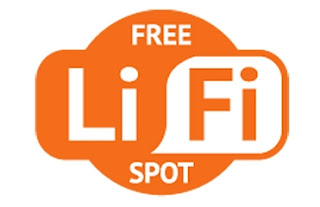Li-Fi Technology by Professor Harald Haas
Li-Fi is a label for wireless-communication systems using light as a carrier instead of traditional radio frequencies, as in Wi-Fi.
Li-Fi should not be confused with the more general term visible light communications (VLC),
which is the use of the visible light portion of the electromagnetic
spectrum to transmit information.
The term Li-Fi was coined by Professor
Harald Haas from the University of Edinburgh in the UK and pureVLC’s CSO, and refers to a type of VLC technology that delivers a networked, mobile, high-speed communication solution
in a similar manner as Wi-Fi. Therefore, the fundamental pre-requisite
for Li-Fi is a bi-directional link over the same medium. The term was
first used in this context by Harald Haas in his 2011 TED Global talk on visible light communication.
In October 2011, a number of companies and industry groups formed the Li-Fi Consortium,
to promote high-speed optical wireless systems and to overcome the
limited amount of radio-based wireless spectrum available by exploiting a
completely different part of the electromagnetic spectrum. The
consortium believes it is possible to achieve more than 10 Gbit/s, theoretically allowing a high-definition film to be downloaded in 30 seconds. In fact, Dr Gordon Povey provides a top level overview of VLC development until the end of 2011.A number of companies offer uni-directional VLC
products, however, the only known bi-directional system on offer is by
pureVLC. PureVLC is an original equipment manufacturer (OEM) firm set up
to commercialize Li-Fi, by bring out Li-Fi products for integration
with existing LED-lighting systems
VLC
technology has been exhibited on numerous occasions and has chiefly
developed over the last decade with the specific drive by Prof. Harald
Haas focusing on Li-Fi, rather than just VLC.Indeed, pureVLC demonstrated the world's first streaming Li-Fi system to complement VLC data rates of over 6 Gbps.
Furthermore, pureVLC was also the first to prove that that Li-Fi, or
VLC systems in general, do not require line-of-sight conditions.

Li-Fi has the advantage of being able to be used in electromagnetic
sensitive areas such as in aircraft, nuclear power plants, oil&gas
installations and other places without causing interference. However,
the light waves used cannot penetrate walls which makes Li-Fi
significantly more secure relative to Wi-Fi.

